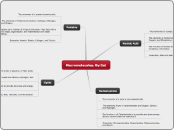realizată de Catherine Johnson 11 ani în urmă
314
Macromolacules
Nucleic acids, such as DNA and RNA, are essential for storing and transmitting hereditary information. They are composed of nucleotides and include elements like carbon, hydrogen, nitrogen, oxygen, and phosphorus.









